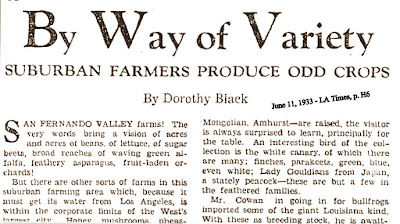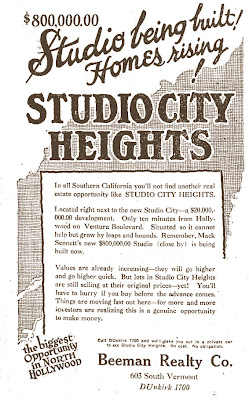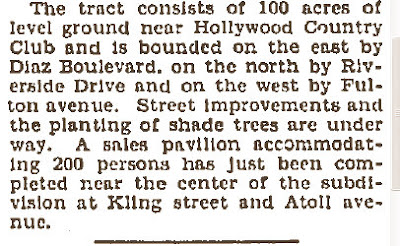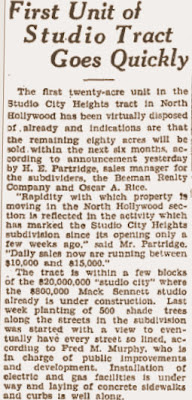Note: This is the first of a series of articles on issues facing our neighborhood. "Smart Growth" was originally published as "Neighborhood Population: 1942."
______________________________________________
Our neighborhood is experiencing a population boom. It's a boom borne of buildings--not babies. And over the last five years it's been hard to miss.
In 2005, a single house on Landale was replaced by 5 condominiums. In 2006, several houses on Fulton were replaced by a four-story apartment building with 40 units. In 2007, a house on Longridge was torn down and replaced by two houses. Ditto for several houses on Atoll. Then there's the new condominiums on Coldwater. And on and on.
The increase in housing is a result of the L.A. City Council passing laws that give developers incentives to build more densely, and it's part of a state-wide plan to prevent urban sprawl. City planners call this new building strategy
"suburban infill" and it's one of the tenets of the
"new urbanism," a planning philosophy that favors walkable neighborhoods that reduce the need for automobiles. It sounds pretty good. But everyone thought it needed a niftier name.
So proponents such as Mayor Villaraigosa and Director of Planning, Gail Goldberg, call it
"smart growth." Opponents like Joel Kotkin call it
"Manhattanization." Kotkin opponent and smart growth advocate, William Fulton, calls it
"Pasadena-izing." (Fulton has a thoughtful commentary on his conflict with Kotkin in
Cool v. Uncool and
What's the difference between Glendale and Palmdale?) Jane Usher, former President of L.A.'s Planning Commission calls L.A.'s new growth
"densification" and says it facilitates sprawl and promotes congested neighborhoods that invite crime and gridlock. Journalist David Zahniser questions the whole premise of the new urbanism by asking:
"What's smart about smart growth?"
That's a quick summary of a big issue. And a cheat sheet to some of the major players. You can learn more by clicking on the links above. And by attending the many homeowner association meetings in our area. But in all these big picture discussions you won't learn a thing about one little issue: Our neighborhood population.
For that you need to consult the 2000 U.S. Census. Our neighborhood is made up of
Census Tract 1434 Block Group 3 and
Census Tract 1434 Block Group 4. Add the figures for these two groups and you've got our neighborhood total. Even though the data is a little out-of-date, it still provides an interesting snapshot. Here's some of the key figures I've gleaned:
- Neighborhood Population: 1,942. The size of a decent small town.
- Owner occupied residences: 1,057. That's 54%, 13 points less then the 67% national average, for those who are interested in such comparisons.
- Renter occupied residences: 885.
- An average of 2.32 people lived in each owner-occupied housing unit, whereas an average of 1.66 people lived in each renter-occupied housing unit. So there's a greater number of people per house then per apartment. Why? Houses have more rooms then apartments, I guess. Seems logical.
Here's some other tidbits that might interest you:
- You can break out our neighborhood by race, income level, mortgage size, profession and a myriad of other categories.
- You can compare the figures of our neighborhood with other neighborhoods. In fact, you can compare our figures with almost any other U.S. geographical designation. I've prepared a couple spreadsheets that do that for Household Population and for General Housing Characteristics. And for readers Sven and KHH in "East" Monterey Village, I've even included your neighborhood info (Census Tract 1434, Block Group 2) in the spreadsheet.
The recent "smart growth" building boom has increased our numbers. By how much? We won't know until the 2010 U.S. Census. In the meantime, "Neighborhood Population 1,942" gives us a general idea of how many people are running around here. And that's probably "good enough," as my father used to say.
See you around the neighborhood! - Jeff








